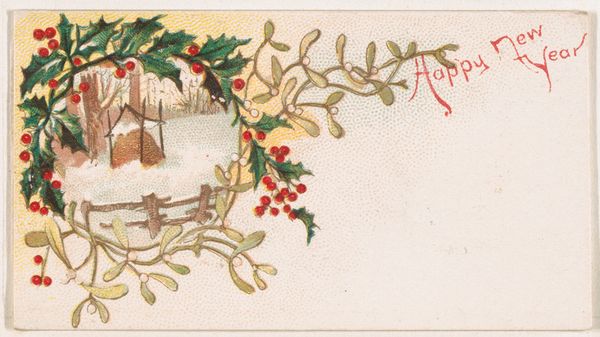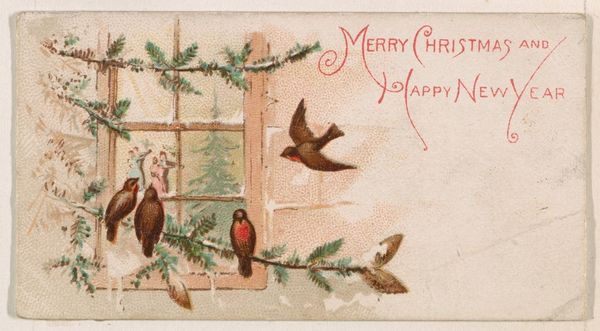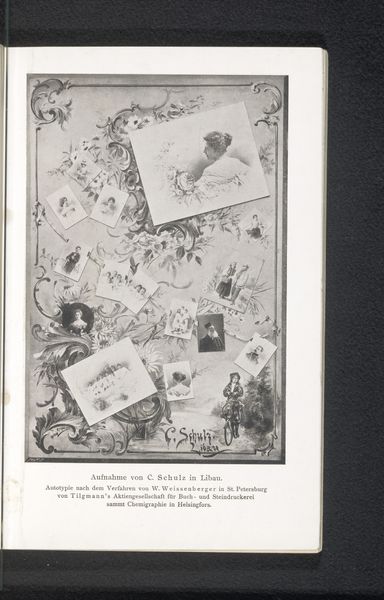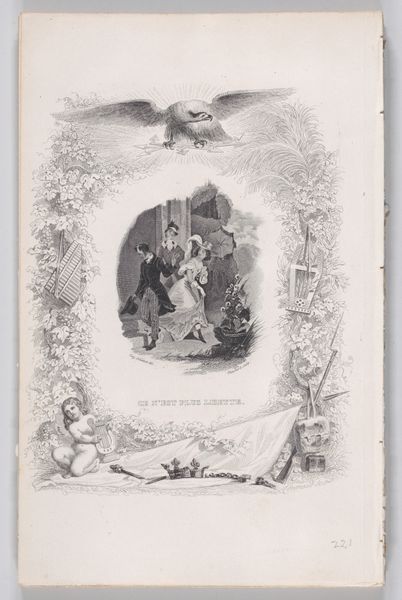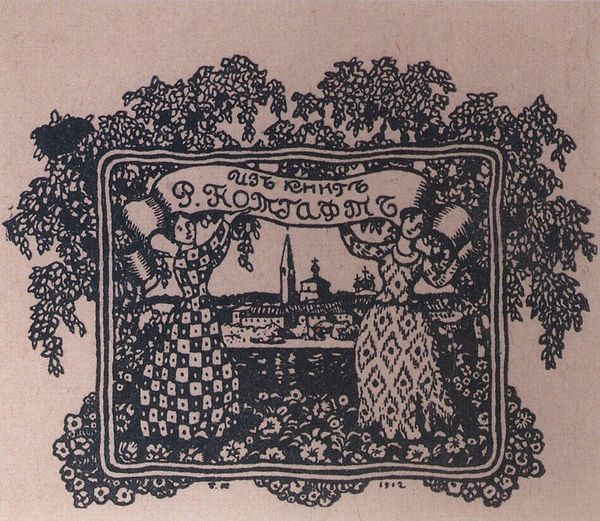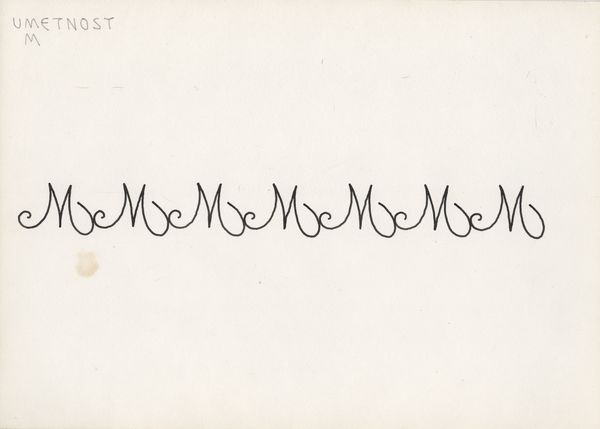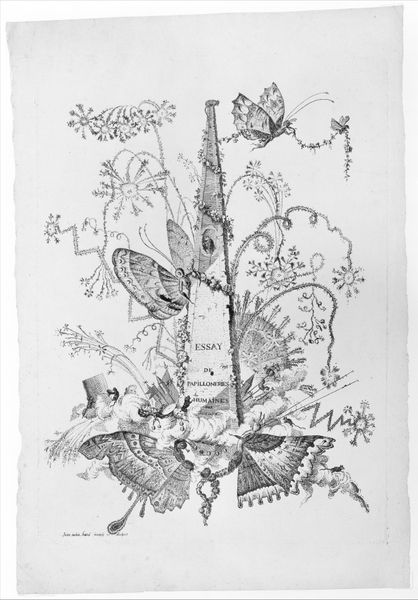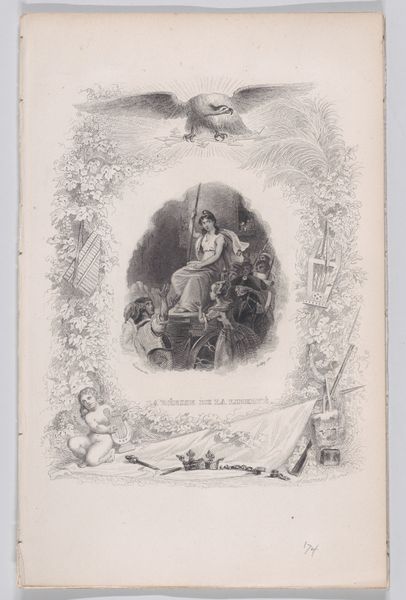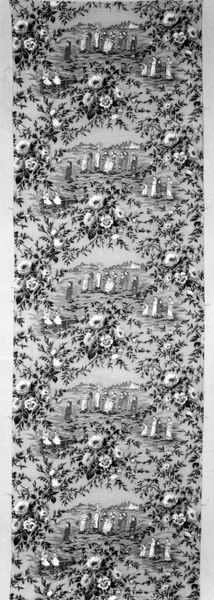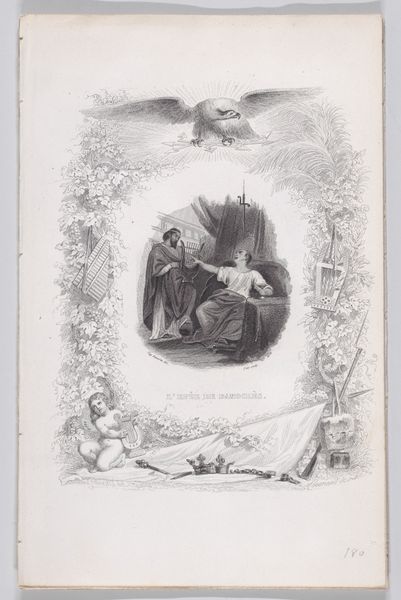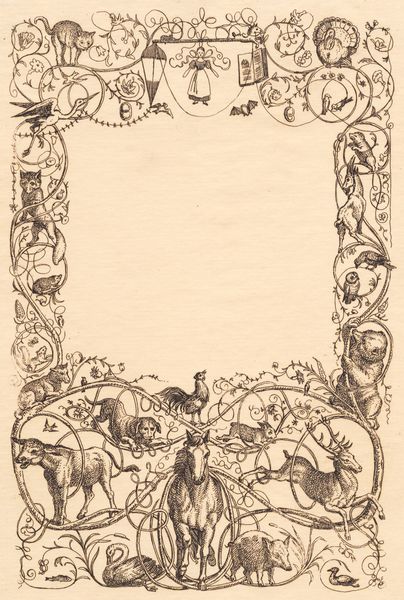
graphic-art, print, typography, poster
#
word art style
#
graphic-art
#
hand-lettering
# print
#
lettering
#
hand drawn type
#
landscape
#
typography
#
hand lettering
#
text
#
word art
#
typography
#
hand-drawn typeface
#
typography style
#
poster
#
small lettering
Copyright: Public domain
Editor: Here we have Currier and Ives' "Merry Christmas" from 1876, a striking example of their print work. The typography, framed by lush foliage, has a distinctly handcrafted feel. It reminds me of a Victorian-era greeting card, overflowing with sentiment. How would you interpret this work? Curator: It’s important to see Currier and Ives’ prints as integral to the development of a visual culture accessible to the masses in 19th century America. They democratized art by producing inexpensive, readily available images that reflected the nation’s values, aspirations, and, crucially, its emerging consumer culture. What role do you think sentimentality played in this specific piece's appeal to the public? Editor: I suppose in a rapidly industrializing nation, sentimentality offered a connection to more traditional values and a simpler time. It’s interesting how "Merry Christmas" feels both homespun and commercially produced. It straddles the line. Curator: Precisely. Consider the socio-political climate. Post-Civil War, America was reconstructing, redefining its identity. How do you think images like this, emphasizing domesticity and tradition, might have contributed to that process of national healing and redefinition? Editor: Maybe by reinforcing a sense of shared cultural values? It's interesting how mass-produced art could play a role in shaping a collective identity. I never really thought about Currier and Ives prints that way. Curator: It shows how art institutions – even popular printmakers like Currier and Ives – weren't just reflecting society but actively shaping it. Editor: That really changes my perspective. I’ll never look at a simple greeting card the same way again. Thanks for making me see beyond the surface! Curator: It was my pleasure. Seeing art in its socio-political context always opens new avenues of understanding.
Comments
No comments
Be the first to comment and join the conversation on the ultimate creative platform.
